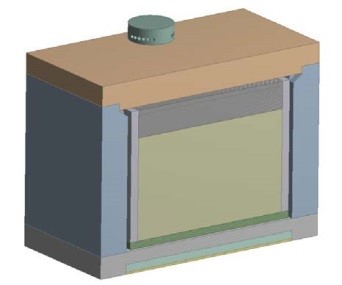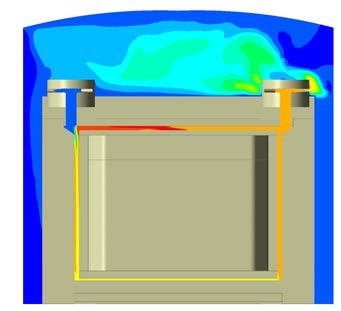Using Computational Fluid Dynamics to Solve the Transport of Nuclear Waste
Legacy wet wastes at the Sellafield site are to be recovered and transported to a new facility, the Sellafield Direct encapsulation Plant (SDP). Here, the wastes will be sorted and mixed with grout before being cast into liners. The final product will be transported within a flask, and it is possible that while within the flask, hydrogen may continue to be released from the cured grout block. Therefore, sufficient ventilation is necessary within the flask ullage to prevent an accumulation of hydrogen, which could become a deflagration hazard.
MMI Engineering built a computational model of the package, as shown in Figure 1. This model was also incorporated into a transport canopy.
Figure 1: The Package Comprising the Encapsulated Waste, Box and Flask
The model allowed for a conjugate heat transfer calculation with radiation to be undertaken in order solve the transport of hydrogen, including buoyancy driven flows due to the heating effect of the waste.
Figure 2 shows the distribution of hydrogen within the package and within the transporter. Various accident scenarios for this package were investigated, including the effect of the package rolling onto its side and impact on the vent structures, which would result in blockage and subsequent hydrogen accumulation.
Figure 2: The Package Comprising the Encapsulated Waste, Box and Flask Incorporated in a Transporter. Contours show Hydrogen Concentration
Results
The use of Computational Fluid Dynamics allowed a number of scenarios, including normal operation and accident, to be investigated within a relatively short time scale compared to undertaking experimental trials.
For more information surrounding our project lifecycle experience within the Nuclear Industry, please contact us on 0117 960 2212 (Bristol) or email us.

